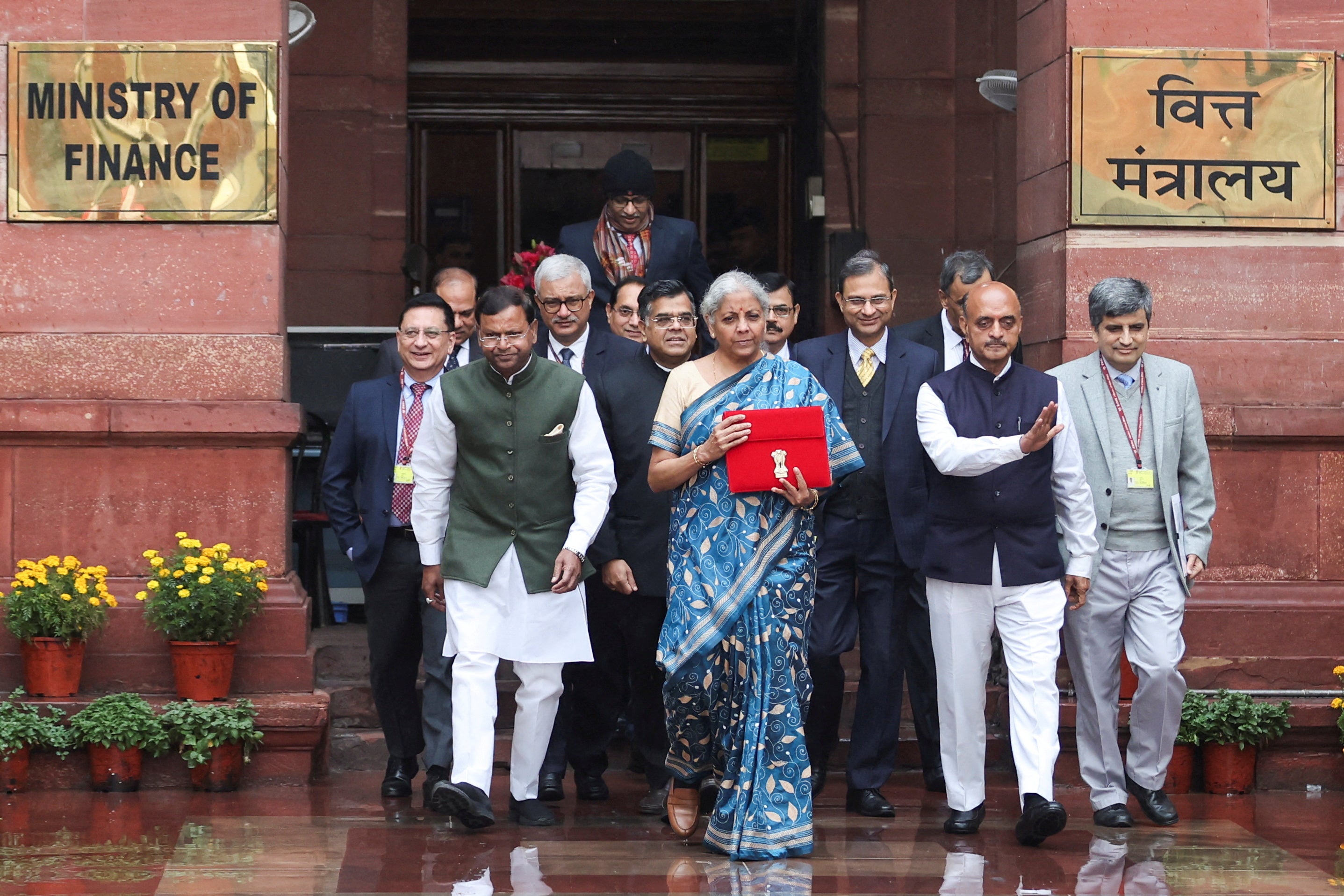India’s economy forecasted to grow at 6.5-7 pc in 2024-25
Growth projection lower than those forecast by Reserve Bank of India, which estimated it to be between 7 to 7.2 per cent

Your support helps us to tell the story
From reproductive rights to climate change to Big Tech, The Independent is on the ground when the story is developing. Whether it's investigating the financials of Elon Musk's pro-Trump PAC or producing our latest documentary, 'The A Word', which shines a light on the American women fighting for reproductive rights, we know how important it is to parse out the facts from the messaging.
At such a critical moment in US history, we need reporters on the ground. Your donation allows us to keep sending journalists to speak to both sides of the story.
The Independent is trusted by Americans across the entire political spectrum. And unlike many other quality news outlets, we choose not to lock Americans out of our reporting and analysis with paywalls. We believe quality journalism should be available to everyone, paid for by those who can afford it.
Your support makes all the difference.India is projected to grow at 6.5 per cent to 7 per cent in the upcoming fiscal year, said the economic survey released in the parliament on Monday.
The survey, usually presented on 31 January, a day before the country’s finance minister releases the union budget for the next fiscal year was delayed due to the general election this year.
Also seen as the annual report of the country’s financial performance in the previous fiscal year, it analyses the key economic indicators including gross domestic product, inflation, as well as the performance of different sectors. It also provides an insight into the country’s fiscal deficit, and economic goals, thereby laying the foundation for budgetary decisions.
“The survey conservatively projects a real GDP growth of 6.5-7 per cent, with risks evenly balanced, cognisant of the fact that the market expectations are on the higher side,” said the 522-page document, supervised by Anantha Nageswaran, Chief Economic Advisor (CEA) to the Finance Ministry.
It also noted that the inflation is under control and the economy is on a strong wicket, even as it struck a cautious note on private capital formation after good growth in the last three years.
However, the latest growth projection is lower than the GDP forecast by India’s Reserve Bank of India, which in June predicted it to be from 7 to 7.2 per cent. The prediction is however in line with the 7 per cent forecast by International Monetary Fund (IMF) and the Asian Development Bank (ADB).
Noting that the Indian economy has recovered and expanded in an orderly manner after being hit by the pandemic, the survey said: “The Indian economy has consolidated its post-Covid recovery with policymakers – fiscal and monetary – ensuring economic and financial stability”.
The survey revealed that India needs to add 7.85 million jobs each year until 2030, to sustain the current economic growth, as it warned that the economy faces challenges in generating adeqate employment opportunities, especially in non-farm sector.
Country’s workforce is estimated to be 565 million, of which agriculture makes nearly 45 per cent of the employment. It is followed by by services at 28.9 per cent, construction at 13 per cent, and manufacturing at 11.4 per cent, reported the Business Standard.
It also stated that hiring in the information technology sector has slowed down in this fiscal year and while, it may not decline, the job creation “is unlikely to pick up significantly".
The survey revealed that nearly 46.7 million people were added to the workforce, highest since 1981-82, while the country saw a growth of six per cent.
It however, highlighted the exacerbated skill gap in the workforce, adding that while about 65 per cent of India’s population is under 35, only 51.25 per cent of the youths are employable.
Though, it is an upscale from 34 per cent mark about a decade back, the skill gap needs to be addressed in the face of changing market.
While’s India current GDP level is close to the pre-pandemic trajectory in fourth quarter of the current fiscal year, the survey warned that the escalation of geopolitical conflict in 2024 may lead to “supply dislocations, higher commodity prices, reviving inflationary pressures and stalling monetary policy easing with potential repercussions for capital flows”.
Though GDP growth is lower than 8.2 per cent growth rate recorded in the last year’s survey, the CEA pointed out that it seems to be stable.
“The Indian economy is on a strong wicket and stable footing, demonstrating resilience in the face of geopolitical challenges,” Mr Nageswaran said. “The Indian economy has consolidated its post-Covid recovery with policymakers – fiscal and monetary – ensuring economic and financial stability. Nonetheless, change is the only constant for a country with high growth aspirations.”
India has to perform domestically for a sustained recovery, the CEA said, “because the environment has become extraordinarily difficult to reach agreements on key global issues such as trade, investment and climate”.
The economic survey has backed more Chinese investment in the country, even as investments worth billions of dollars from China suffer disruption due to increased geopolitical tensions between New Delhi and Beijing since 2020.
India needs to either integrate into China’s supply chain or promote foreign direct investment (FDI) from China, to boost the global exports .
“Among these choices, focusing on FDI from China seems more promising for boosting India’s exports to the US, similar to how East Asian economies did in the past.”
The report said choosing the FDI strategy “appears more advantageous than relying on trade” as it can arrest the growing trade deficit New Delhi has with Beijing, the top exporter for India.
Additional reporting by agencies
Join our commenting forum
Join thought-provoking conversations, follow other Independent readers and see their replies
Comments